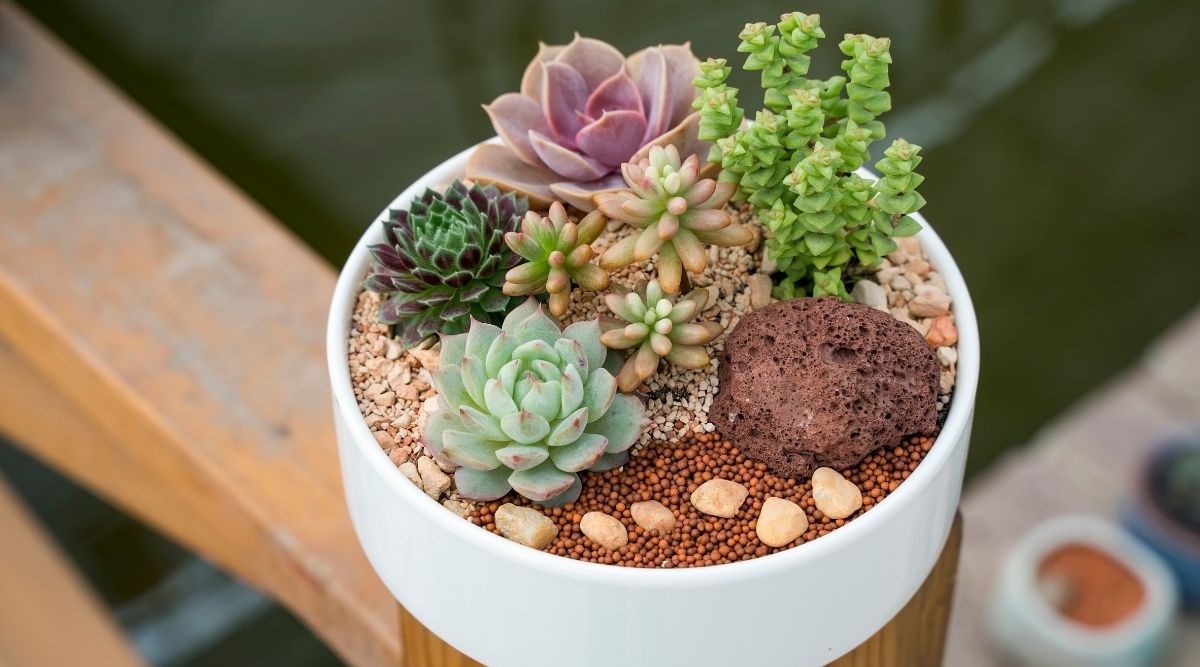Aloe vera plants are grown worldwide and are very popular plants to have in your home. As aloe vera plants are succulents, it is important that you have the correct storage for them and they can be positioned where they have access to bright direct sunlight.

Aloe vera plants are very pleasing to look at as they have small spikes along the edges of the long green leaves.
But do aloe vera plants bloom?
When a plant blooms, it can instantly light up a room! Having an aloe vera plant is incredibly soothing as there are many medicinal properties associated with aloe vera. If your Aloe vera can bloom, is there anything that you can do to help it along its way?
Find out if Aloe vera plants bloom so that you can be sure that you are taking care of your Aloe vera plant in the best way possible.
Can Aloe Vera Plants Bloom?
If you own an Aloe vera plant and want it to bloom, there are a few things to be aware of. Aloe vera plants can bloom, but it is only mature Aloe vera plants that bloom flowers.
If you own an Aloe vera plant and it hasn’t flowered, chances are that it has nothing to do with your care. To reach maturity, Aloe vera plants need to be at least 4 years old before they begin to start blooming.
As Aloe vera plants need to be stored in direct sunlight, this helps the Aloe vera’s chances of blooming. When sat in indirect sunlight and heat, this can affect the plant’s ability to bloom as it tends to bloom in strong sunlight.
It still needs to be in warmer temperatures as it is unable to withstand freezing temperatures, but your Aloe can be moved outside when the temperature begins to warm to increase the chances of it blooming.
Can I Help My Aloe Vera Plant Bloom?
When you are wishing for your Aloe vera plant to bloom, there are a couple of things that you can do to make your plant more comfortable so that it can fully bloom.
This will give the plant the best chance of blooming so that you can have clusters of flowers appearing on your Aloe vera!
Watering
It is important not to overwater your Aloe vera plant as you don’t want to drown it. If the plant is overwatered, the water will remain in the pot and rot the roots as it won’t be able to drain properly.
To prevent this from happening, water your plant every 2 weeks in the summer and every 4 weeks in the winter. This will help your Aloe to drain properly whilst also remaining hydrated so it can fully bloom.
The soil should remain moist but it needs to be able to dry out before you water the plant again to protect the roots. The soil needs to be moist to touch, not soaking wet. Soaking wet soil can lead to rotting roots, so don’t feel tempted to overwater the plant because it won’t need it.
Temperature

As mentioned above, your Aloe vera plant has the best chance of blooming in direct sunlight, so you may need to move your plant around the room to make sure that it is getting the right amount of sunlight that it needs.
The temperatures that an Aloe vera plant blooms in are between 70-85 degrees Fahrenheit, so you can transfer your plant outdoors when these temperatures hit to make sure that it is in the correct temperature to bloom.
If you decide to move your plant outside to bloom in the warmer temperatures, you will most probably need to bring it back in during the night.
The plant can’t bloom in temperatures lower than 60 degrees Fahrenheit, so you may need to bring the plant back into the house during the night into warmer temperatures.
Fertilization
Fertilizing your Aloe vera plant can help encourage the plant to fully bloom, so it is a good idea to fertilize your plant if you want to see it bloom.
In the springtime and midsummer, a balanced fertilizer will help to encourage the Aloe vera to fully bloom. Phosphorus fertilizer should be avoided as it can damage the plant and negatively affect blooming instead of encouraging it.
If you decide to fertilize your plant, it is a good idea to water it straight afterward. This helps to drain any salt that remains inside the pot from the fertilizer. If the salt is left in the soil with the Aloe vera plant for too long, it can begin to damage the plant which can also negatively impact the blooming process.
Repotting
Repotting your plant has many benefits for the health of Aloe vera. Once the roots have become too long, you need to consider moving your plant to a slightly larger pot.
Once you have repotted your Aloe vera plant, don’t water it for at least a week. This helps to prevent the roots from rotting and allows the plant to begin to grow new roots.
It is also important to not use gardening soil when replanting your Aloe vera. You need to use a mixture of bark, perlite, and lava rock to ensure that your Aloe vera plant is happy in its surroundings and can thrive.
Final Thoughts
To conclude, Aloe vera plants can bloom when they are carefully looked after in the correct conditions. The plants need to be kept in direct sunlight to make sure that they can fully bloom and in warm temperatures between 70-85 degrees Fahrenheit.
If you are transferring your Aloe vera plant outside to bloom, remember to bring it back in if temperatures drop below 60 degrees Fahrenheit.
Finally, you will be able to experience lots of joy when taking care of your Aloe vera plant and helping it fully bloom. The result will be a beautiful and proud moment for you and your plant!
- Best Hanging Plant For Low Light - September 4, 2023
- Best Indoor Plants Florida - August 28, 2023
- Best Plants For Bathroom Smells - August 21, 2023








